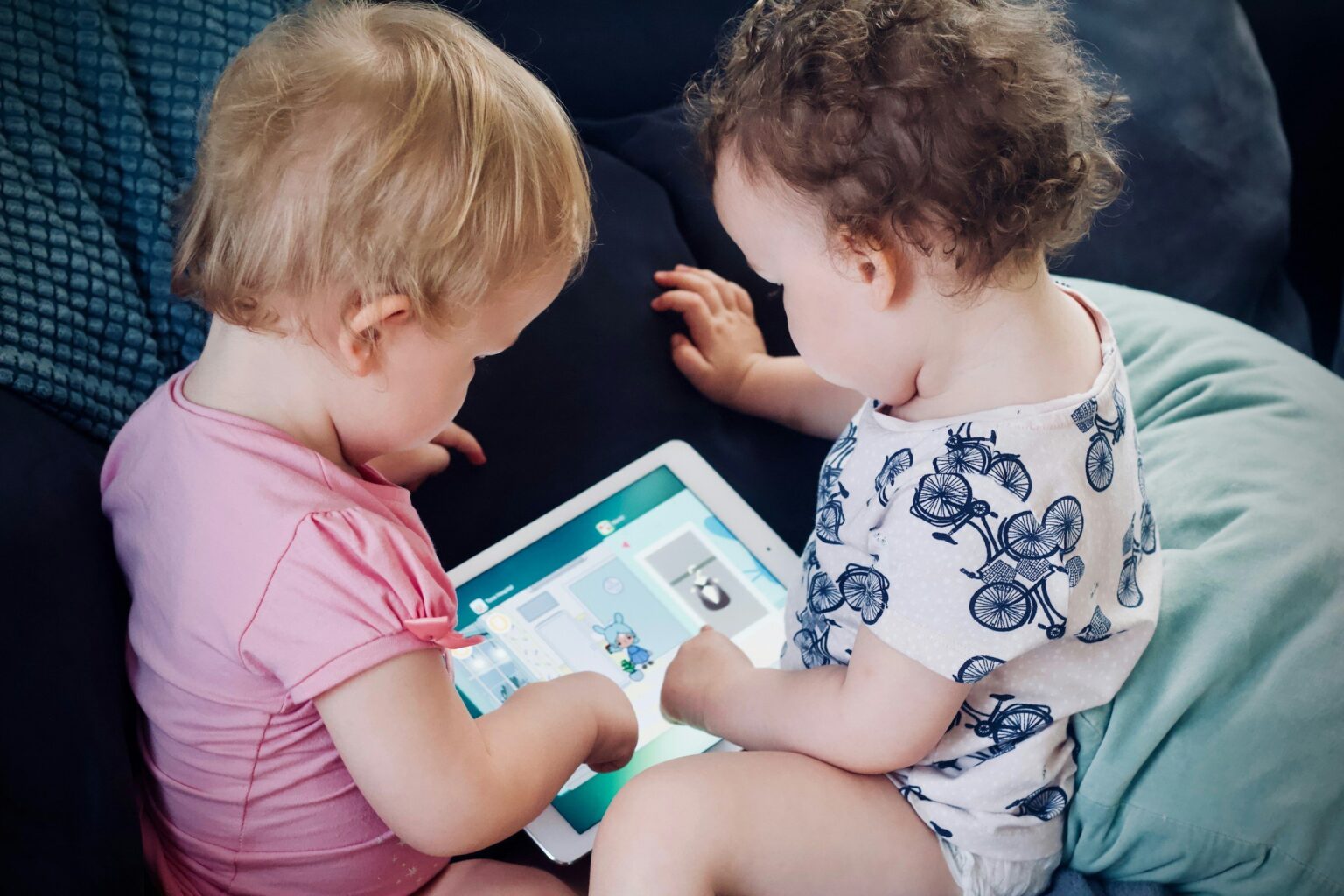In a world that is increasingly digital, the role of screens in our lives is undeniable. For parents, especially those with babies and toddlers, the question of how to manage screen time can be confusing. Today we will explore the topic of screen time for babies and toddlers and provide practical guidance on finding the right balance between technology and early childhood development.
American Academy of Pediatrics Guidelines
For infants under 18 months of age, the AAP advises to not use screens at all, with the exception of video calls with family and friends. This recommendation is grounded in the understanding that very young children learn best through in-person interactions and by exploring their physical environment.
For toddlers aged 18 to 24 months, the AAP suggests that if parents decide to introduce technology, they should do so thoughtfully and in moderation. High-quality educational content can be introduced, but it should be viewed with a parent or caregiver who can help the child understand what they are seeing and connect it to the real world. Remember that children this age cannot tell the difference between what is real and what is fantasy, so even content that seems innocuous to us can be confusing for toddlers.
But what if I can’t avoid screen time?
Here at The Digital parent we recognise that everyone’s circumstances are different. While we highly recommend children under 2 do not have any screen time, we recognise that being able to abstain is not a privilege open to everyone. If you do decide to introduce screen time with your baby or toddler it is crucial to ensure that screen time doesn’t overshadow other vital aspects of a child’s life. Achieving a balance between screen time, physical activities, social interaction, and creative play is essential. Some strategies to help maintain this balance are:
Choose simple and collaborative screen time
When selecting digital content, simple, collaborative screen time over personal devices. Watching educational content on television with a caregiver is much better than providing children of this age with personal devices such as tablets or phones that are more isolating and overstimulating.
Co-view and co-play
Transform screen time into a shared experience by sitting with your child and discussing what they are watching or playing. Ask questions, provide context, and create opportunities for learning through conversation.
Set specific screen time limits
Establish reasonable limits for screen time based on your child’s age, and stick to them. The AAP recommends that children aged 2 to 5 should have no more than one hour of high-quality screen time per day. We do not recommend letting children know about these screen limits, however, as this can lead to them demanding they get the whole allocated time. Instead, we recommend knowing the limit yourself and redirecting children once they have reached the limit you are comfortable with. Children do not need to reach their screen time limit every day.
Embrace offline activities
Encourage outdoor play, reading, drawing, and other hands-on activities, as these experiences are crucial for your child’s cognitive, emotional, and physical development.

